With the debut of the ninth generation Intel Core processors belonging to the Kaby Lake family, Intel has introduced the Z390 chipset as an alternative to the Z370. This is a chipset designed for use on top of the motherboards, which is ideally matched with Intel Core i7 and Core i9 with 8-core architecture. All motherboard manufacturers have submitted their own proposals in different versions, with ASUS that has played the lion’s role by presenting models for a while all their families.
In this article we will analyze two models of the ROG family, Republic of Gamers, specifically aimed at the most passionate users but based on different form factors. The ROG Maximus XI Formula card is in ATX standard and for onboard equipment and technical choices is positioned among the top boards proposed by ASUS for Intel processors of the Core family. The ROG Maximus XI Gene card is instead built with Micro-ATX form factor, smaller but no less equipped with additional features.
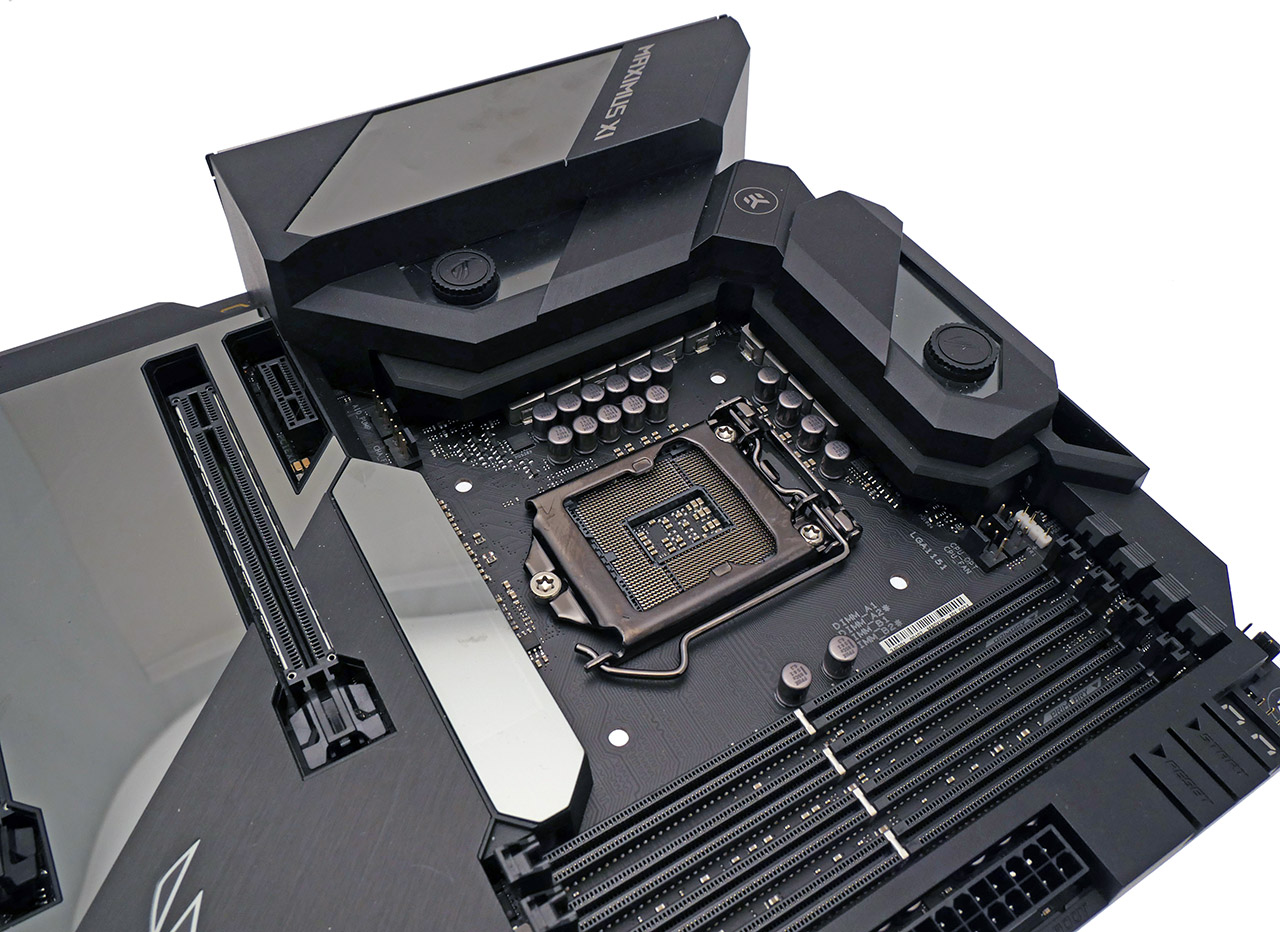
Except for onboard component choices, it is difficult to highlight specific differences between motherboards that are based on the same chipset. The models of a little all manufacturers are equivalent from the performance point of view, and it is difficult to highlight significant features with the same processor when you want to intervene in overclocking. With the ROG cards of the Z390 family, ASUS has however chosen to introduce a new overclocking technology, which at a time when artificial intelligence has become one of the most discussed themes takes the name of AI Overclocking.
We will see below what this technology is and what benefits it allows to obtain; first let’s move on to analyze the main technical features of the two ROG Maximus XI motherboards so as to better highlight their peculiarity and price positioning.
| Template | ASUS ROG Maximus XI Formula | ASUS ROG Maximus XI Gene |
| Chipset | Intel Z390 | Intel Z390 |
| Socket | LGA 1151 | LGA 1151 |
| Form factor | ATX | Micro-ATX |
| Memory slot | 4, DDR4 | 2, DDR4 |
| 16x PCI Express slot | 3 (1 slot max 4x mode) | 1 |
| PCI Express 4x slot | – | 1 |
| 1x PCI Express slot | 1 | – |
| PCI slot | – | – |
| SLI compatibility | Yes, 2 cards | No |
| CrossFire Compatibility | Yes, up to 3 cards | No |
| USB 2.0 ports | 4 ports on the motherboard | 4 ports on the motherboard 2 rear doors |
| USB 3.1 Gen1 ports | 6 4- door rear doors on the motherboard |
6 rear doors 2 ports on the motherboard |
| USB 3.1 Gen2 ports | 4 rear doors (3 Type-A and 1 Type-C) 1 door on the motherboard |
4 rear doors (3 Type-A and 1 Type-C) 1 door on the motherboard |
| Power connectors | 1 EATX 24 pin 1 EATX 12V 8 pin 1 EATX 12V 4 pin |
1 EATX 24 pin 2 EATX 12V 8 pin |
| Onboard video | HDMI | HDMI |
| Firewire | No | No |
| Bluetooth | 5.0 | 5.0 |
| Thunderbolt | No | No |
| WiFi | Intel Wireless-AC 9560 | Intel Wireless-AC 9560 |
| SATA | 6 doors | 4 doors |
| SATA Express | No | No |
| M.2 | 2 M.2 slots | 2 M.2 slots support 2 M.2 slots via ROG Dimm.2 module |
| U.2 | No | No |
| eSATA | No | No |
| LAN | Intel I219V, Gigabit Aquantia AQC111C 5G LAN |
Intel I219V, Gigabit |
| Audio | ROG SupremeFX audio codec high definition S1220A |
ROG SupremeFX audio codec high definition S1220A |
| Fan Connectors | 7 | 7 |
In spite of the different sizes, both Maximus XI motherboards are characterized by a rich onboard accessory that will hardly leave any unsatisfied user. The superior length of the ROG Maximus XI Formula model allows the installation of a greater number of PCI Express slots, with support for 2-card configurations via NVIDIA SLI technology and up to 3 cards with the AMD Crossfire. For the ROG Maximus XI Gene card we find only one PCI Express 16x slot and the number of slots for DDR4 memory modules is halved to 2.
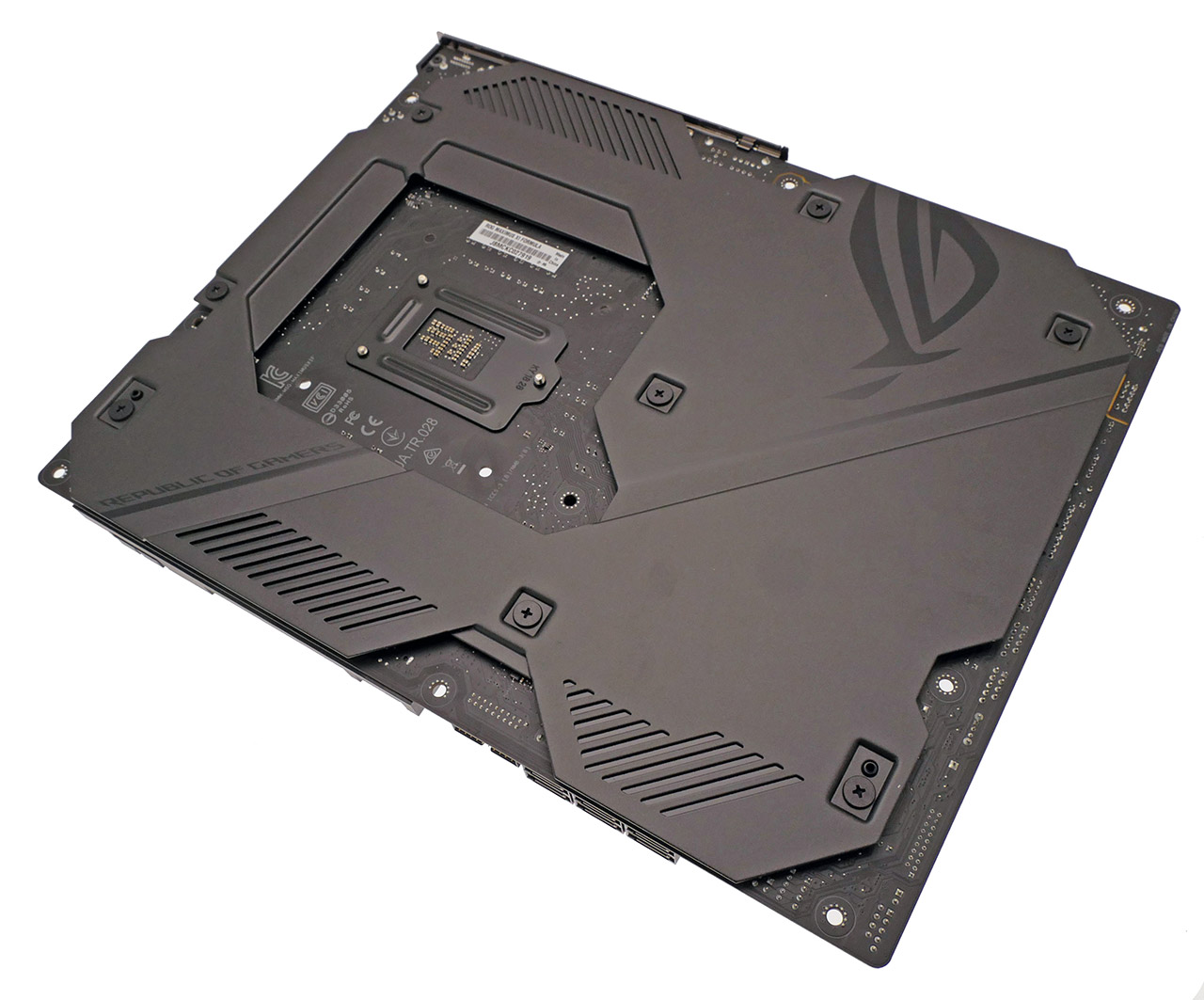
There are numerous USB connectors, with versions 3.1 Gen 1 and Gen 2 both Type-A and Type-C; Gigabit ethernet and WiFi connectivity are integrated into both boards and identical is the audio subsystem, based on the ROG Supreme FX solution with S1220A codecs. It is amazing the possibility to install in the Gene card up to 4 SSDs in M.2 format, against 2 of the ROG Maximus XI Formula proposal: this is due to the possibility of using the ROG Dimm.2 module, which once mounted in the special slot allows you to install up to 2 SSD M.2.
The ROG Maximus XI Formula is based on the ATX form factor, but is characterized by a cover that hides most of the lower half of the PCB. It is a design choice that recalls what has been done by ASUS in the past with the motherboards of the TUF family. The purpose is twofold: to protect the superficial components from accidental contacts as well as ensuring a uniformity in the heat dissipation. The aesthetic appearance is certainly impactful, with the presence of RGB LEDs that can be programmed by the user according to personal preferences.
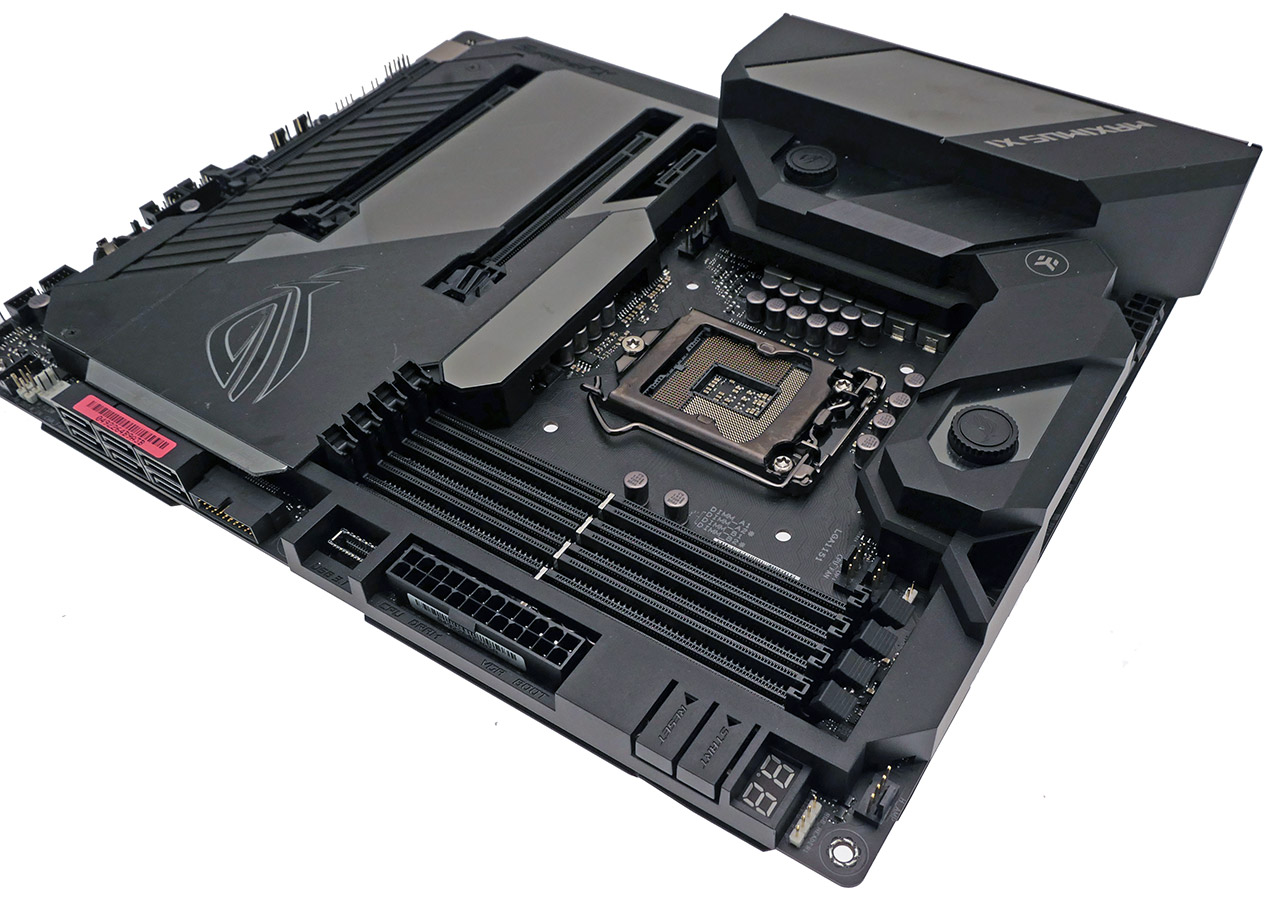
The integrated onboard accessory is extremely complete, and after all the very important purchase cost leaves no room for discounts. There are 3 PCI Express slots, with the third connected to the chipset with 4x signal and not to the integrated controller in the processor. There are 4 memory slots, while around the processor socket the power circuitry is covered with a heat sink that integrates a liquid cooling system inside, connected in cascade to the processor and video card kit.
The arrangement of components along the PCB is such as not to create problems in their installation. The memory slots are appropriately spaced from the first 16x PCI Express slot and the power connectors located in traditional areas. Connectors for fans, USB ports and case buttons are all gathered at the bottom, so as to facilitate routing of cables inside the case.
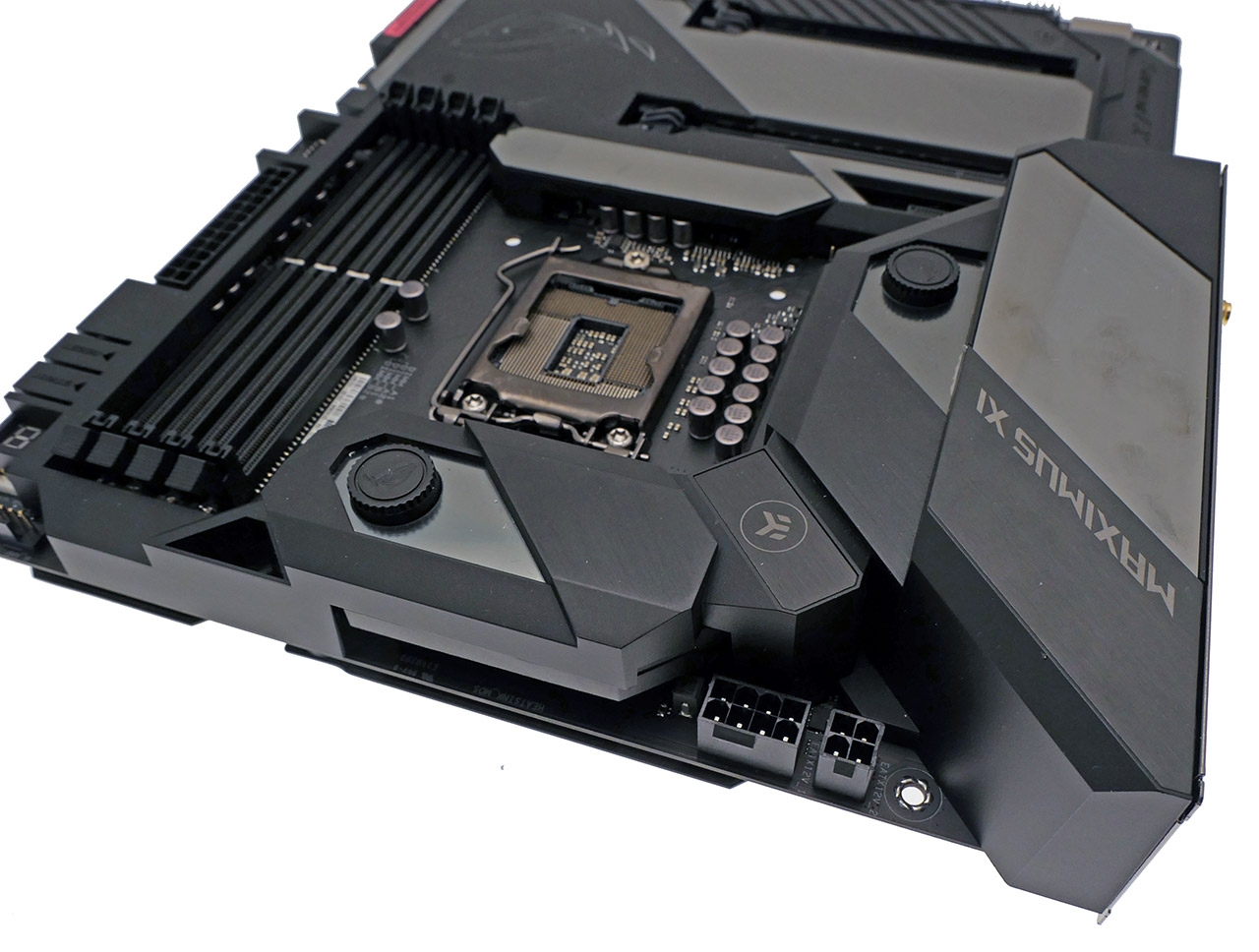
Despite the size of the ROG Maximus XI Gene motherboard leaves little to be desired: it is a product intended for users more passionate tweaking and overclocking, developed to take into account the needs of those who want a PC enthustast but with a total footprint of the case it is more content than the standard. From this the particular arrangement of some components, like all connectors for USB ports, LEDs and buttons of the case that are mounted rotated 90 degrees so as to facilitate the positioning of the cables.
The PCB contained and the need to provide this card with an oversized overclocked power circuitry has led to the need to install only two slots for DDR4 memory modules, more than enough for most users. On the other hand, ASUS has installed two M.2 slots for SSD units, offering the possibility of installing two additional ones using the ROG DIMM.2 card supplied in bundle and equipped with its own dedicated slot next to the memory.
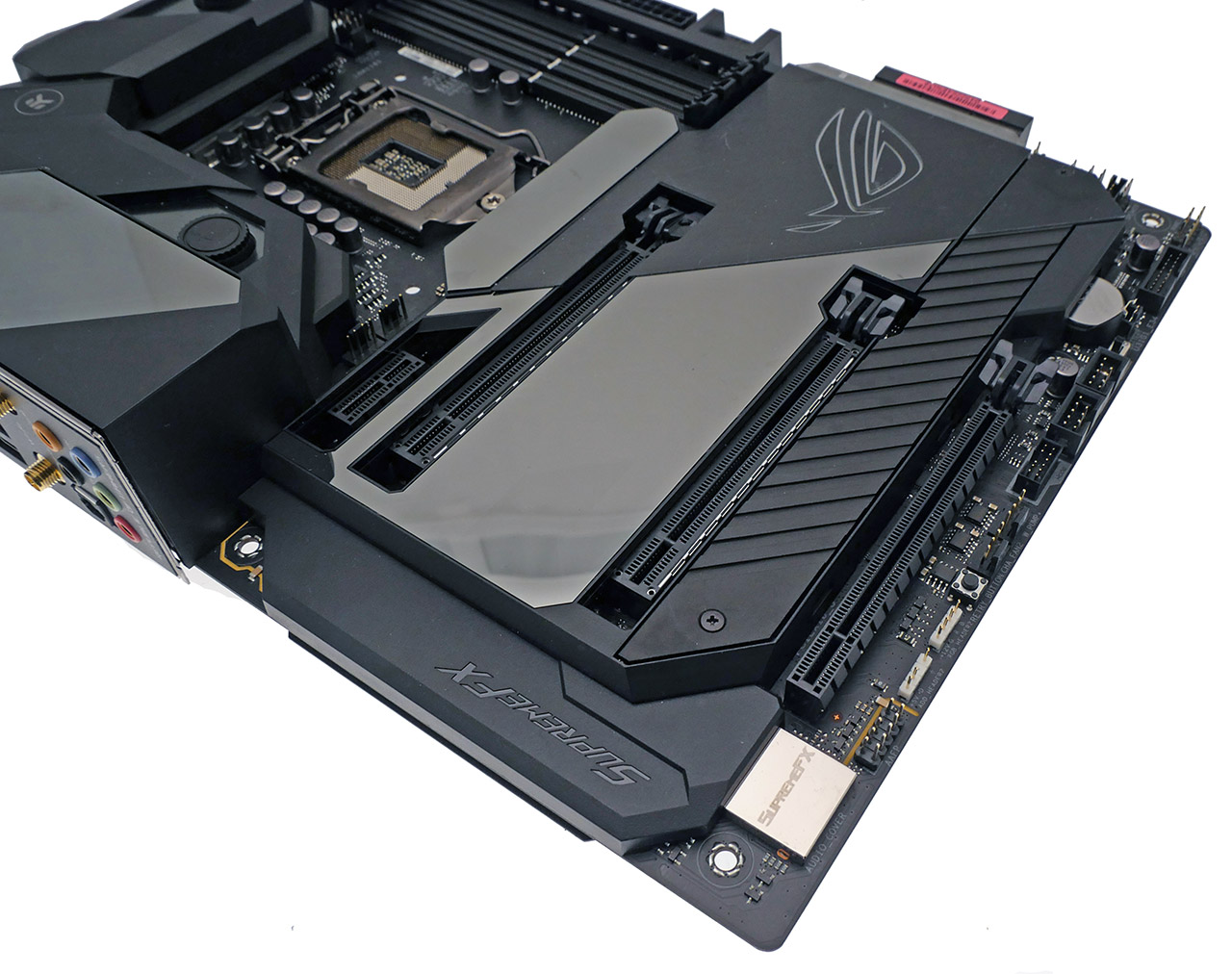
That this is a solution for the enthusiast shines already just observing the upper right: ASUS has integrated two mechanical switches that manage the mode of use with liquid nitrogen cooling system and the so-called slow mode. There is obviously no lack of power, reset and specific tests for useful memories when the card is mounted on a test stand. The two 12V power connectors of type 8pin are certainly not the norm: it is a solution that we have seen in the past in enthusiast motherboards specifically aimed at the overcast overclocked.
In spite of the large number of integrated onboard components, there are no particular problems related to the layout and accessibility of the components. The memory modules and the ROG Dimm.2 modules remain easily accessible even with a video card mounted in the system, while the layout of the PCI Express 4x slot over the PCI Express 16x allows you to use an accessory card allowing you to install even with a cooling system to 3 slots.
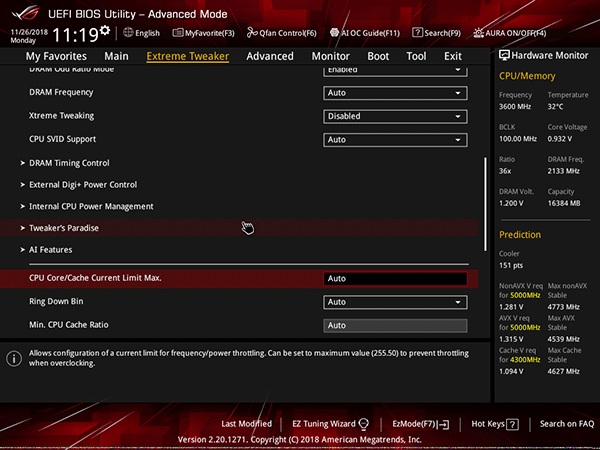
Both cards use a UEFI Bios that incorporates the features already seen in the previous generation ASUS ROG Maximus motherboards. The Extreme Tweaker menu allows you to intervene manually on the parameters of the processor and system memory, with an extremely detailed level of detail: the user is passionate about a series of almost infinite advanced settings, which we doubt will be modified for the most part as much more detailed and analytical than is generally found in such motherboards.
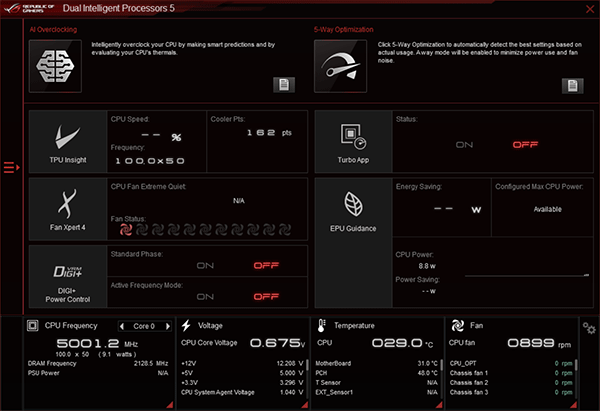
The ASUS AI Suite 3 package is the basis of the advanced tweaking features of the two ASUS ROG Maximus XI motherboards. The AI Overclocking function intervenes in a completely automatic way to push the processor up to the maximum frequency permanently supported, but in a different way compared to what was done in the past by similar tools. With the Z390 cards, ASUS has implemented a processor quality evaluation system, in terms of its overclocking tolerance, combining this with an estimate of the characteristics of the cooling system used. Both application and bios can be used to select overclocked settings.

From bios it is possible to obtain various information for overclocking, starting from the score given to the cooling system which in this case is equal to 151 points. The motherboard provides a first evaluation of the overclocking potential of the processor used on the motherboard, providing an estimate of the maximum clock frequencies that can be used by the system by matching clock and power supply voltage. The score for the cooling system varies greatly depending on the type of combined solution. ASUS indicates these scoring ranges as a reference:
- Basic air cooling system: about 120 points
- Large air cooling system: 140 to 150 points
- Integrated liquid cooling system: 150 to 160 points
- Custom liquid cooling system: over 160 points
We left the AI Overclock logic to operate independently with two samples of Intel, Core i9-9900K and Core i3-8350K models. In the first case we obtained stable operation up to 5 GHz of clock, but with an adequate frequency of 4.8 GHz as a maximum using all 8 cores at the same time available to the CPU. This is a result aligned to the overclocking that we had previously obtained by manually intervening on the CPU, able to ensure stable operation without the CPU temperatures being increased to a higher extent than the default settings.
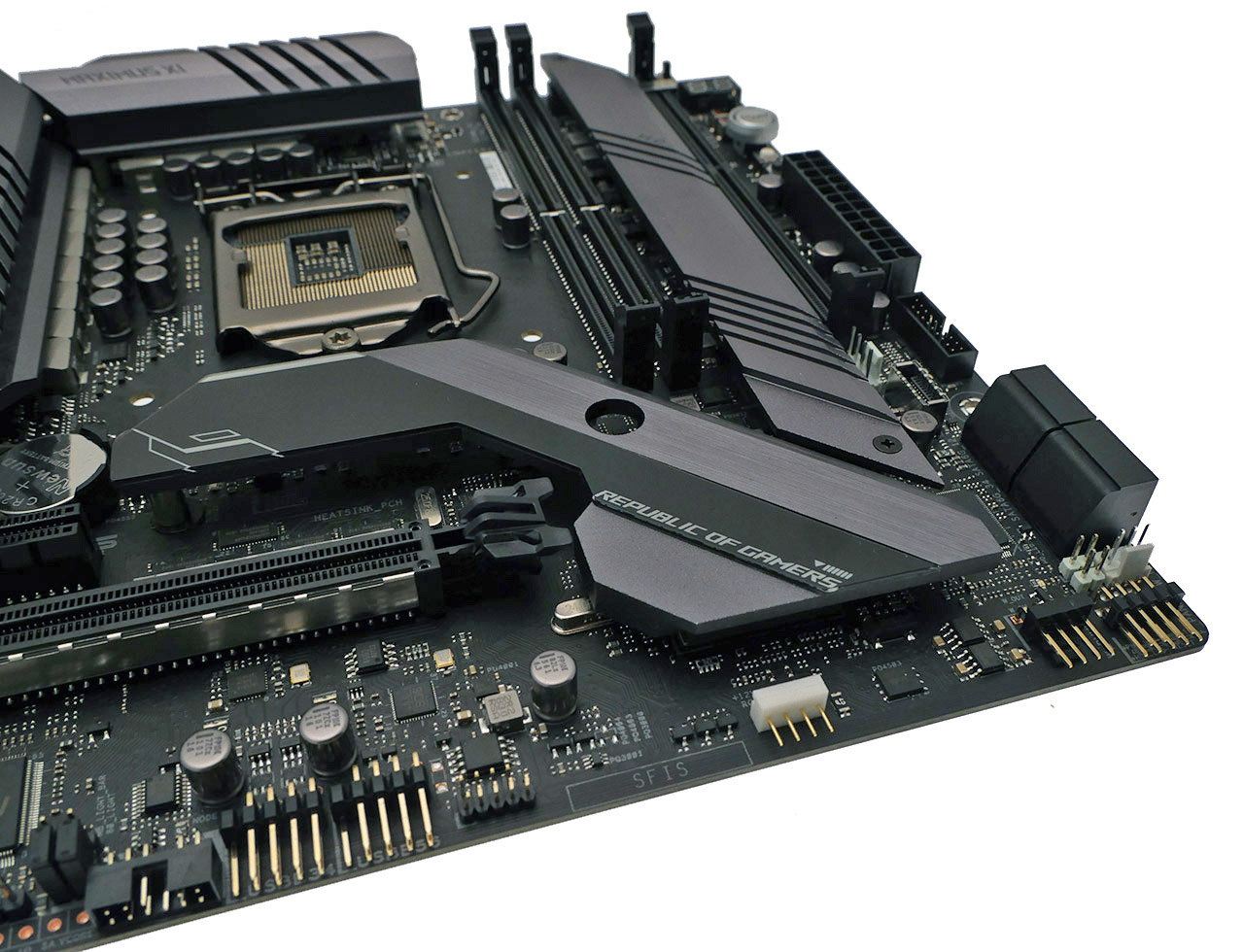
For the Core i3-i8350K CPU, characterized by quad core architecture with a default clock rate of 4 GHz without Turbo Boost technology, the Overclocking AI system has pushed the frequency up to a stable value of 4.8 GHz for all cores. Also in this case we have not highlighted problems of excessive operating temperature, thanks also to the Noctua heat sink used in tests that is much larger than the standard.
The number of motherboards on the market continues to remain very high, although the number of companies engaged in their production has decreased over the years. If 15 years ago it was possible to identify at least 20 manufacturers involved in their construction, now in fact this is a sector that sees ASUS, Gigabyte and MSI play the main role followed by ASRock, EVGA, and Biostar in the retail market. The progressive integration of system components within the CPU has led to a simplification in the design of motherboards: manufacturers have less room for intervention in tweaking their products, which with default settings and with the same chipset in fact go all in same way.
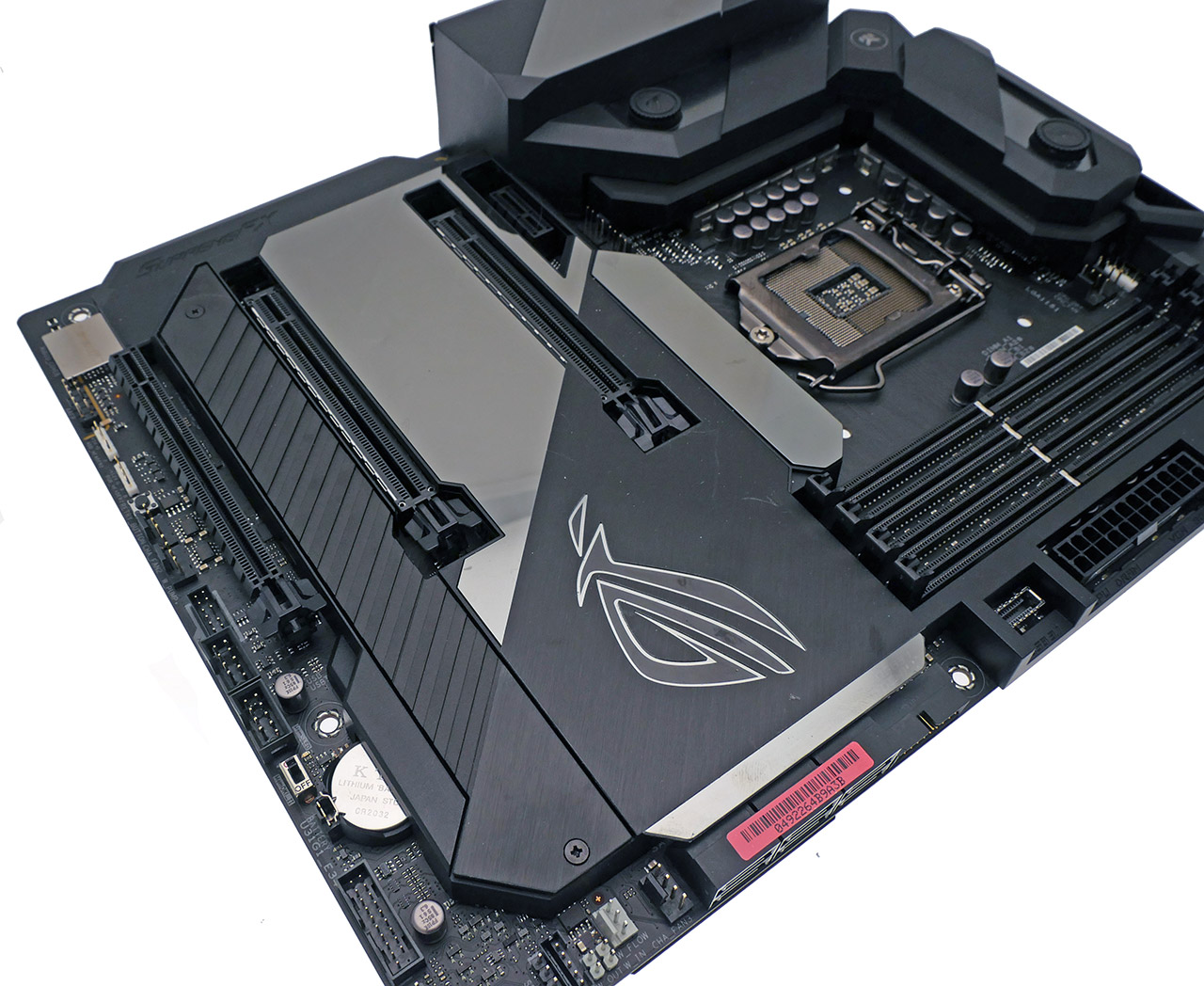
Where can you differentiate? In addition to design and integrated accessory equipment, the motherboard manufacturers try to invent new solutions that can allow their models to better meet the needs of consumers. The AI Overclocking technology implemented by ASUS in the cards with the Z390 chipset of the ROG family is an example of what can be done: it will not change, we believe, the overclocking of the most passionate users but is a very interesting option for those users who they face the overclocking and want the guarantees of a guided and efficient system.
The two proposals ROG Maximus XI Formula and Gene are confirmed, like the previous generations, models that meet the needs of the most passionate, offering an uncompromising operation. They are complete boards, suitable for the most elaborate hardware configurations and that especially in the Gene model stand out for the tweaking endowment. All this makes it possible to make the most of the ninth generation Core processors, at price lists that are anything but popular: the ROG range Maximus has always been the top product in the ASUS motherboard range.


